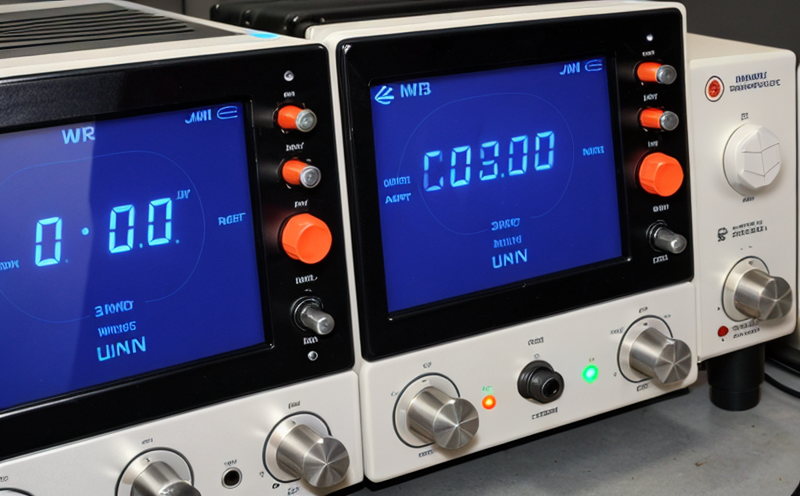IEC 62657 Wireless Communication Coexistence Testing for IoT Systems
The International Electrotechnical Commission (IEC) standard IEC 62657 provides a framework for ensuring coexistence between multiple wireless communication systems operating in proximity to each other. This is particularly critical in the context of Internet of Things (IoT) devices, which are increasingly prevalent in homes and businesses.
The standard addresses the potential interference that can occur when different RF (radio frequency) bands overlap or when devices from different manufacturers operate on the same spectrum. Compliance with IEC 62657 is essential for ensuring interoperability, minimizing signal degradation, and maintaining reliable communication within IoT ecosystems.
Our laboratory specializes in conducting comprehensive coexistence testing according to this standard. By simulating real-world conditions, we assess how various devices interact when operating simultaneously on the same or adjacent frequencies. This service helps manufacturers ensure their products meet regulatory requirements and perform optimally in diverse environments.
Testing typically involves placing multiple IoT devices under test within a controlled environment that mimics actual usage scenarios. The devices are configured to operate at various power levels and transmit data continuously for extended periods. Our team monitors the interference levels, signal strength, and overall performance of each device throughout these simulations.
The results of our testing provide valuable insights into potential issues and help guide improvements in product design. This ensures that IoT devices can coexist harmoniously without causing significant disruption to one another or degrading network performance. By adhering to IEC 62657, businesses can enhance the reliability and efficiency of their IoT systems.
The importance of this testing cannot be overstated, especially in sectors like smart home technology where multiple devices from different manufacturers may need to work together seamlessly. Proper coexistence testing ensures that these devices not only comply with international standards but also function effectively within complex, interconnected networks.
Scope and Methodology
| Test Parameters | Methodology |
|---|---|
| Device Configuration | Devices are configured to operate on specified frequency bands and power levels. |
| Environmental Conditions | Tests are conducted in controlled environments that mimic real-world conditions, including temperature variations and background noise. |
| Data Transmission Simulations | Devices transmit data continuously for extended periods to simulate typical usage patterns. |
| Interference Measurement | Interference levels are measured using advanced RF analysis equipment. |
- Frequency Bands Tested: Includes major bands such as 2.4 GHz, 5 GHz, and sub-1 GHz frequencies.
- Device Types: Covers a wide range of IoT devices including smart speakers, thermostats, security cameras, and wearables.
Benefits
- Enhanced Interoperability: Ensures that multiple devices from different manufacturers can operate seamlessly within the same network.
- Improved Reliability: Reduces the risk of signal interference, which can degrade overall system performance.
- Regulatory Compliance: Helps manufacturers meet international standards and avoid costly penalties for non-compliance.
- Market Differentiation: Demonstrates a commitment to quality and reliability, enhancing brand reputation and customer trust.
Use Cases and Application Examples
| Application Example | Testing Scenario |
|---|---|
| Smart Home Ecosystem: | Multiple devices such as smart speakers, thermostats, and security cameras are placed within a home environment to simulate real-world conditions. |
| Industrial IoT Networks: | IoT devices used in manufacturing plants are tested for coexistence on shared RF bands to ensure smooth operations. |
| Healthcare Facilities: | Medical devices and wearables are tested within a hospital setting to minimize interference with critical equipment. |
- Smart Home: Ensuring that all devices in a smart home system can function together without causing signal degradation or disruption.
- Manufacturing: Testing IoT devices used on production lines to ensure they do not interfere with each other's performance.
- Hospitals: Evaluating the coexistence of medical devices and wearables within a healthcare facility environment.





